Mammoth Cave
Dr. John Croghan purchased Mammoth Cave from Franklin Gorin in 1839 for $10,000 and retained possession of the cave until his death in January of 1849. When he purchased the cave, he also purchased Stephen Bishop, a man enslaved by Gorin, and leased the services of two well-known cave guides Mat Bransford and Nick Bransford. These men were the principal guides and explorers of Mammoth Cave for over 20 years, with Stephen Bishop drawing the most well-known 1845 map of the cave.
While Mammoth Cave was initially most valued for its abundance of calcium nitrate (used in making saltpeter), Dr. John Croghan was interested in the possibilities of utilizing the cave as a tourist attraction as well as a tuberculosis hospital. While this tuberculosis hospital was not successful, the cave thrived as an attraction.
Header image: Willis Thomas Lee, Public domain, via Wikimedia Commons

The community of individuals enslaved at Mammoth Cave did not exist in a vacuum.
It is very easy to think of the enslaved people who lived at Mammoth Cave as a separate community. However, it was part of a larger, more fluid, single community of enslaved people. Charlotte Bishop Bransford and Alfred and Hannah Croghan all started at Locust Grove and were moved to Mammoth Cave. Stephen Bishop visited Locust Grove at least once to draw the map for Rambles in Mammoth Cave. After emancipation, Alfred Croghan and his family moved back to Louisville from Mammoth Cave. The Croghans regularly moved enslaved people around between properties. These people would have known, met, or heard of each other and did not exist separately from each other. They are all a part of the Locust Grove story.
